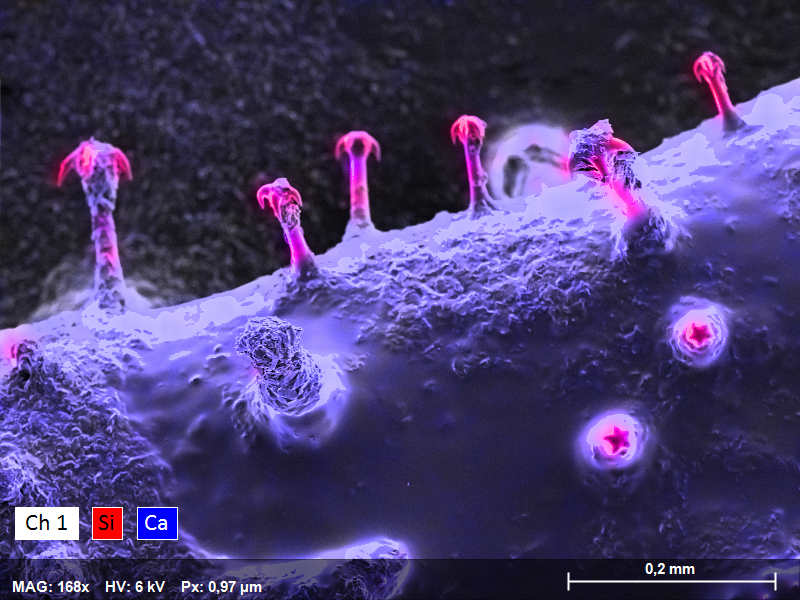

Elemental Analysis of Biological Samples using SEM EDS
Discover the Elemental Mapping of Life Science Samples
The elemental analysis of life science samples using scanning electron microscopy (SEM EDS) is inherently challenging because it requires the use of non-destructive and non-invasive techniques. This challenge is particularly pronounced in the EDS analysis of biological materials, which are often beam sensitive and have intricate topographical features. Challenges such as electrical charging and shadowing, which lead to sub-optimal results, are frequently encountered. Additionally, the use of low beam currents to mitigate charging and protect fragile samples can extend measurement times to potentially damaging levels.
The cutting-edge XFlash® FlatQUAD annular detector addresses these analytical challenges. The detector's annular design means it can be strategically positioned between the SEM pole piece and the sample, where it collects X-rays emitted from the sample in all directions thanks to its four seperate detector segments. These design features mean that the XFlash® FlatQUAD provides the largest solid angle available from an EDS detector (1.1 sr), whilst minimizing shadowing effects and enhancing X-ray sensitivity. The high sensitivity of this detector allows for reduced measurement times when examining non-conductive samples without coatings, even at low beam currents and under high-vacuum conditions.
In this webinar we demonstrate how using XFlash® FlatQUAD the elemental analysis of biological samples is possible. We will present EDS SEM results from a diverse array of biological samples, including organisms such as a sea worm (Polychaeta (Fig. 1)) and a stinging nettle plant (Urtica sp. (Fig. 2)). Additionally, insights gained from the study of air filtration plants are shared. The presentation includes a comprehensive overview of the analytical approach used, illustrating how a single click can expand the measurement area across multiple fields, facilitating the analysis of larger sample areas.
The integration of state-of-the-art hardware and software ensures a fast and reliable analysis of challenging samples, further enhancing the efficiency and accuracy of the overall process.
Find out more about the elemental analysis and mapping of biological samples by watching this on-demand webinar.
Who Should Watch?
- Biologists who are working with both organic and inorganic materials.
- Material scientists and researchers who work with topographically complex, three-dimensional, and beam-sensitive samples.
- Scientists from all analytical fields who are interested in microscopy and the distribution of elements in micro and nanostructures.
We are grateful to the University of Bonn's Institute for Organismic Biology for providing samples used in this webinar.
Speakers
Max Patzschke
Application Scientist EDS, Bruker Nano Analytics
Watch this Webinar On-Demand
Please enter your details below to gain on-demand access to this webinar.

